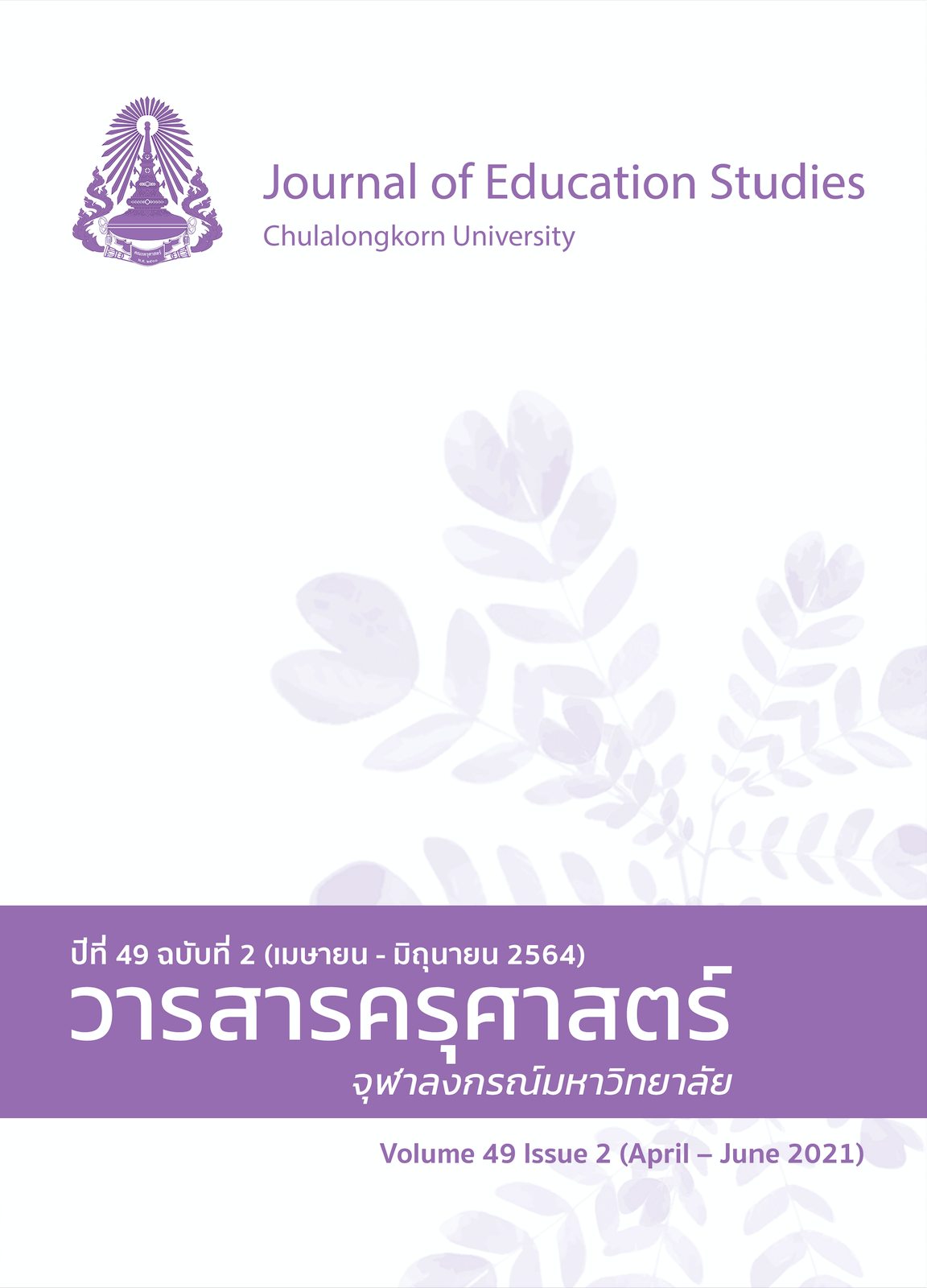Academic Management Strategies Based on Content and Language Integrated Learning and English Competency of Secondary Students
DOI:
https://doi.org/10.14456/educu.2021.22Keywords:
academic management, CLIL approach, English competencyAbstract
The objectives of this research were to: 1) Study the conceptual framework of academic management strategies based on the Content and Language Integrated Learning (CLIL) approach and the English competency of secondary school students; 2) Study the current and desirable states of the strategies and competency; 3) Using the SWOT strategic planning technique, study the Strengths, Weaknesses, Opportunities and Threats of the strategies and competency, and; 4) Further develop the strategies and competency. The research applied a mixed-method approach, and the samples were selected from 113 world-class rated schools with an English program and/or a mini-English program. The research instruments employed consisted of a questionnaire and a strategic evaluation form, and the data were analysed by frequency, percentage, mean, standard deviation, PNI modified and content analysis. The results revealed that:1) The conceptual framework consisted of three aspects, namely, academic management, CLIL approach and English competency of secondary school students; 2) As a whole, the current state was at the moderate level, while the desirable state was at the high level; 3) The strengths consisted of the school curriculum, and student measurement and evaluation, while the weakness was the learning process development. The opportunities were government policy and technology, while threats were economic and social situations; 4) There were three main strategies, namely: (1) Urgent upgrading of the learning process development; (2) Enhancing the effectiveness of student measurement and evaluation, and; (3) Adjusting the curriculum.
References
ชัชฎาภรณ์ อร่ามรุณ, สมชัยวงษ์นายะ, และ เจริญวิชญ์ สงพงษ์ธรรม. (2556). กลยุทธ์การบริหารงานวิชาการในสถานศึกษาขั้นพื้นฐานสังกัดสำนักงานเขตพื้นที่การศึกษาประถมศึกษากำแพงเพชร เขต 1 และเขต 2. วารสารศึกษาศาสตร์ มหาวิทยาลัยนเรศวร, 15(4), 45-54. https://so06.tci-thaijo.org/index.php/edujournal_nu/article/view/16100
สำนักงานเลขาธิการสภาการศึกษา. (2554). นโยบายหลักเพื่อขับเคลื่อนการปฏิรูปการศึกษาในทศวรรษที่สองhttp://backoffice.onec.go.th/uploads/Book/1044-file.pdf
เสาวภาคย์ ศรีโยธา. (2555). ปัญหาการเรียนภาษาอังกฤษระดับชั้นมัธยมศึกษาปีที่ 3 ในโรงเรียนขยายโอกาส สังกัดสำนักงานเขตพื้นที่การศึกษาประถมศึกษาพัทลุง เขต 1 [สารนิพนธ์ปริญญามหาบัณฑิต ไม่ได้ตีพิมพ์]. มหาวิทยาลัยสงขลานครินทร์.
ภาษาอังกฤษ
Banegas, D. L. (2011). Integrating content and language in English language teaching in secondary education: Models, benefits, and challenges. Studies in Second Language Learning and Teaching, 2(1), 111-136. https://doi.org/10.14746/ssllt.2012.2.1.6
Bentley, K. (2010). The TKT course: CLIL module. Cambridge University.
Bernabé, M. M., & Mateos, M. F. (2013). The effects of CLIL from the perspective of in-service teachers in Salamanca. Educacação e Formação, 8(2), 200-217. http://exedra.esec.pt/wp-content/uploads/2014/09/14.pdf
Coyle, D. (2005). CLIL planning tools for teachers. Università di Foggia. https://www.unifg.it/sites/default/files/allegatiparagrafo/20-01-2014/ coyle_clil_planningtool_kit.pdf
Coyle, D., Hood, P., & Marsh, D. (2010). CLIL: Content and language integrated learning. Cambridge University Press.
Kelly, K. P., & Hibbert, S. (2014). Ingredients for successful CLIL. In M. E. Poisel (Ed.), 1st CLIL conference for Austrian BMHS (pp. 6-14). University of Education, Vienna.
Krejcie, R. V., & Morgan, D. W. (1970). Determining sample size for research activities. Educational and Psychological Measurement, 30(3), 607-610. https://doi.org/10.1177/001316447003000308
Lasagabaster, D. (2008). Foreign language competence in content and language integrated courses. The Open Applied Linguistics Journal, 1(1), 30-41. https://doi.org/10.2174/1874913500801010030
Leone, A. R. (2015). Outlooks in Italy: CLIL as language education policy. Working Papers in Educational Linguistics, 30(1), 43-63. https://repository.upenn.edu/wpel/vol30/iss1/3
McDougald, J. S. (2015). Teachers' attitudes, perceptions and experiences in CLIL: A look at content and language. Colombian Applied Linguistics Journal, 17(1), 25-41. http://dx.doi.org/10.14483/udistrital.jour.calj.2015.1.a02
Prasongporn, P. (2009). CLIL in Thailand: Challenges and possibilities. In M. Patel & P. P. Davies (Eds.), The first access English EBE symposium (pp. 95-103). Jakarta, Indonesia. https://bit.ly/2J34IK7
Villavicencio, A., & Grayman, J. K. (2012). Learning from “Turnaround” middle schools: Strategies for success. New York University, the Research Alliance for New York City Schools. http://steinhardt.nyu.edu/scmsAdmin/media/users/jnw216/RANYCS/WebDocs/RANYCS-MiddleSchoolTurnaround-ExecSummary-20120214.pdf
Downloads
Published
How to Cite
Issue
Section
License

This work is licensed under a Creative Commons Attribution-NonCommercial-NoDerivatives 4.0 International License.




